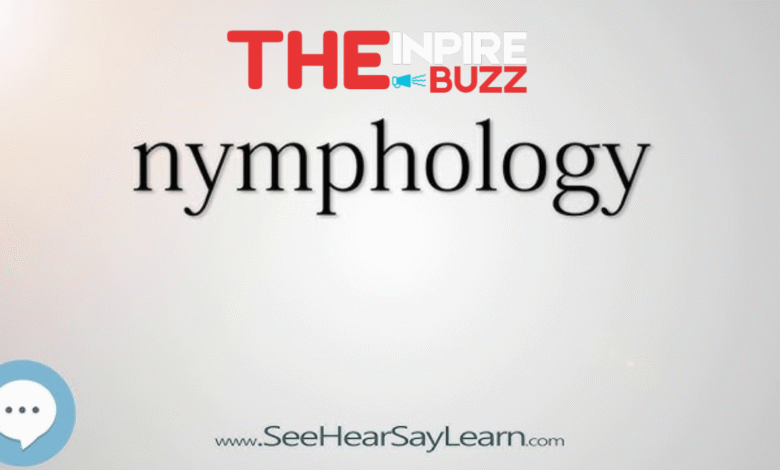Nymphology Meaning A Deep Dive into History, Symbolism

When people first come across the phrase nymphology meaning, they often pause and wonder what it’s really about. At first glance, it sounds mystical, almost otherworldly, as if tied to ancient myths and secret knowledge. In reality, it has a fascinating background that stretches across mythology, literature, and even philosophy.
Talking about this subject isn’t just about defining a word. It’s about opening a window into how language, culture, and imagination shape the way we understand symbols. The beauty of exploring nymphology meaning is that it feels like tracing a thread back through time—one that connects us to stories, archetypes, and the mysterious side of human creativity.
Nymphology Meaning and Its Mythological Roots
To truly understand nymphology meaning, we have to step back into the world of ancient mythology. Nymphs were known as nature spirits—often linked to forests, rivers, or mountains—who embodied beauty, vitality, and the wild freedom of the natural world. These figures weren’t just decorative side characters in myths; they symbolized the connection between humans and the environment.
When people speak of nymphology meaning today, they are often pointing toward the study or symbolic exploration of these mythical beings. It isn’t about science in the strictest sense, but more about interpretation. In a way, it’s an attempt to understand how these ancient images of nymphs have traveled through time and stayed relevant in art, literature, and cultural memory.
Exploring Nymphology Meaning in Literature and Art
Over the centuries, writers and artists have turned to nymphs for inspiration, and this is where the idea of nymphology meaning really blossoms. From classical poetry to modern fantasy novels, nymphs appear as figures of enchantment, sometimes as guides and other times as temptresses. They capture something timeless about human longing, desire, and imagination.
Artists, too, have leaned on these archetypes. Paintings of nymphs often blur the line between reality and dream, making viewers question whether these figures are just myths or symbols of something deeper. When critics and thinkers talk about nymphology meaning in the artistic context, they’re really talking about how these images speak to universal themes—freedom, mystery, and the power of nature.
The Symbolism Behind Nymphs
Looking at symbolism is one of the most rewarding ways to unpack nymphology meaning. On the surface, nymphs may appear as youthful, beautiful women, but they carry layers of meaning beneath that image. They often stand for fertility, renewal, and the cyclical nature of life. Just as forests regrow or rivers continue to flow, nymphs embody the eternal rhythms of the natural world.
Another symbolic layer of nymphology meaning comes from the way nymphs bridge the gap between mortals and gods. They are not as powerful as deities, but they aren’t entirely human either. This in-between role has made them perfect symbols of transition, transformation, and even temptation. Their presence in stories often pushes heroes to make choices that define their journey.
Nymphology in Modern Discussions
In today’s world, people don’t just talk about nymphs in the context of old myths. Modern writers and thinkers use the term to frame discussions around gender, beauty, and even the environment. When someone brings up nymphology meaning in a contemporary setting, they might be exploring how ancient symbols still influence modern ideas about femininity and nature.
Some also see it as a cultural study. By examining how nymphs are portrayed across different times and societies, scholars uncover patterns in human thought. Nymphology meaning here becomes less about fantasy and more about understanding how our collective imagination works—and how myths continue to shape identity and culture in subtle ways.
How Nymphology Influences Popular Culture
Popular culture has borrowed heavily from mythological archetypes, and nymphs are no exception. From films that feature ethereal nature spirits to fantasy games with magical forest characters, the echo of nymphology meaning is everywhere. This shows how myths refuse to fade—they simply evolve into new forms of storytelling.
For fans of fantasy and folklore, seeing these figures pop up in modern works creates a sense of connection. It proves that even in a digital world, ancient symbols still matter. That’s the power of nymphology meaning—it keeps myths alive, not as dusty relics of the past, but as living, breathing ideas that keep inspiring creativity.
Academic Interpretations of Nymphology
While casual conversations around the term may focus on art and culture, academics have also taken an interest. Some interpret nymphology meaning through the lens of psychology, linking nymphs to archetypes found in the human unconscious. Others analyze the role of nymphs in shaping literature across centuries, looking at how their portrayal reflects changing social values.
This more scholarly approach doesn’t just define the word. Instead, it shows how symbols grow over time and pick up new layers of relevance. Through this lens, nymphology meaning becomes a fascinating subject that crosses disciplines, from classical studies to modern cultural analysis.
Why Nymphology Still Matters Today
It’s easy to wonder why a word with such ancient roots still carries weight today. But the truth is, nymphology meaning highlights how myths never really die; they just transform. People still look to stories of nymphs because they touch something universal—our connection to nature, our ideas about beauty, and our curiosity about the unknown.
By keeping these stories alive, we keep alive a part of human heritage that reminds us of who we are and how we’ve evolved. In a fast-paced modern world, reflecting on nymphology meaning is a gentle reminder that imagination and mythology are as essential to human experience as science and technology.
FAQs about Nymphology Meaning
What does nymphology meaning actually refer to?
It generally refers to the study, symbolism, or interpretation of nymphs—mythological nature spirits tied to forests, rivers, and mountains.
Is nymphology an official academic field?
Not exactly. It’s more of a thematic or symbolic exploration, but scholars in literature, mythology, and cultural studies do use the concept.
Why are nymphs important in mythology?
Nymphs symbolized beauty, fertility, and nature’s power. They were also seen as intermediaries between gods and humans.
How does nymphology apply today?
In modern times, it’s used to analyze cultural symbols, explore gender roles, and understand how ancient myths still influence media and art.
Is nymphology related to spirituality?
For some people, yes. Since nymphs are tied to nature, discussions of nymphology meaning can connect with spiritual themes of renewal, balance, and harmony with the earth.



